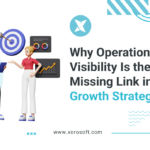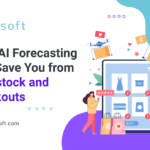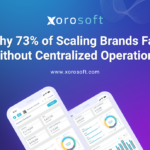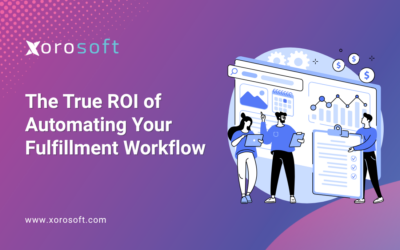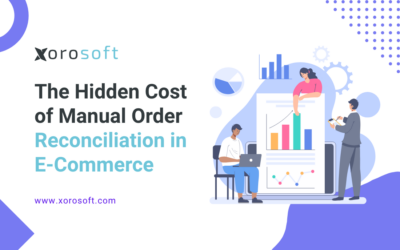
How Operational Visibility in Ecommerce Unlocks Sustainable Growth.
Operational visibility in ecommerce is the quiet advantage most brands miss. Because data lives in silos, leaders lose time reconciling numbers, chasing updates, and explaining cash gaps. Consequently, growth begins to feel like a grind.
However, when you can see orders, inventory, fulfillment, and finance in one live view, everything changes. Decisions get quicker, work feels calmer, and planning becomes repeatable. Moreover, the same team delivers more output with fewer mistakes.
Why Operational Visibility in Ecommerce Matters for Growth
At launch, momentum comes from product and marketing. Over time, though, channels multiply, warehouses expand, and spreadsheets spread. As a result, every update takes longer and every exception hides longer.
Therefore, visibility becomes strategic. When information flows automatically, leaders regain the hours they used to spend verifying data. In addition, teams make choices based on what is happening now, not last week’s report. Consequently, margins improve because waste gets spotted earlier.
Common Frictions That Limit Operational Visibility in Ecommerce
Growth rarely stalls for one obvious reason. Instead, friction accumulates in small places and compounds.
-
Scattered data pulls people into manual copy-paste. As a result, errors creep in.
-
Blind inventory forces overstocking “just in case,” which, in turn, traps cash.
-
Fulfillment lag hides between Shopify and your 3PL; therefore, orders wait.
-
Financial fog appears when costs and revenue sync late; consequently, cash conversion slows.
-
Scaling friction pushes leaders to add headcount rather than improve systems; meanwhile, complexity rises.
Fortunately, every one of these frictions eases once operational visibility in ecommerce is in place. Because data unifies, exceptions surface early and get handled once.
How Operational Visibility in Ecommerce Becomes a Competitive Edge
Once systems connect, day-to-day work starts to flow. For example, you can see real-time stock by location, confirm pick/pack performance, and track landed margin without exporting anything. In addition, alerts flag delays before customers feel them.
Furthermore, leaders can plan with confidence. Since dashboards reflect reality, purchasing aligns with demand, campaigns match capacity, and capital gets allocated where it returns fastest. Consequently, growth stops depending on heroics.
From Firefighting to Flow: A Practical Transformation
Consider a DTC apparel brand near $4M in annual revenue. Initially, Shopify drove sales, a 3PL shipped orders, and a spreadsheet tracked inventory. As a result, Fridays devolved into reconciliation day, and month-end close dragged for more than a week.
After unifying operations, the picture shifted. Pick accuracy rose 18%, because errors were visible and fixable. Order cycle time fell 26%, since order data flowed straight to the warehouse. Inventory turnover climbed from 4.2x to 6.1x, as slow movers were obvious and discounted deliberately. Finally, month-end close time collapsed from nine days to three, which freed leadership to plan rather than chase numbers.
A Six-Step Method to Build Visibility That Scales
You do not need a massive overhaul to get started. Instead, take these steps in order and measure results as you go.
1) Connect growth and operations data
Map every system that touches orders, inventory, fulfillment, and finance. Then integrate them into one live view. Because duplication disappears, teams stop reconciling and start deciding.
Metric: number of disconnected systems (target: zero).
2) Centralize real-time inventory
Sync all channels and all locations to a single source of truth. Consequently, stock counts match reality and reorders happen on time.
Metric: stock accuracy across channels and warehouses.
3) Automate order-to-shipment flow
Push orders to the warehouse automatically and pull confirmations back the same way. Therefore, exceptions stand out instantly and customers receive updates sooner.
Metric: order cycle time from sale to dispatch.
4) Build dashboards that drive action
Create concise views of pick accuracy, fulfillment rate, backlog age, and inventory turns. Then review them daily. As a result, you replace weekly lag with same-day insight.
Metric: percentage of decisions made using current dashboards.
5) Link operations to finance
Connect orders, returns, costs, and landed margin to your accounting system in real time. Consequently, leaders can see profitability by product, channel, and campaign without waiting.
Metric: days to close month-end (goal: under three).
6) Make metrics a shared habit
Train the team to trigger actions when thresholds are crossed. For example, expedite a PO when service level drops, or pause a promotion when backlog rises. In addition, celebrate proactive moves.
Metric: ratio of proactive to reactive adjustments.
A One-Week Quick Start That Builds Momentum
Although long projects can deliver depth, a fast start builds belief. Therefore, use this seven-day plan to create visible wins.
-
Day 1: Audit the stack and list every data source; then rank by operational impact.
-
Day 2: Define core metrics—pick accuracy, order cycle time, inventory turnover, and cash conversion.
-
Day 3: Shortlist systems that integrate natively with Shopify and your warehouse.
-
Day 4: Connect a test environment; consequently, confirm real-time sync.
-
Day 5: Link finance so COGS and returns flow automatically.
-
Day 6: Pilot with one location or one category; meanwhile, document exceptions.
-
Day 7: Review dashboards and decide the first three improvements to lock in.
By the end, you will have proof that operational visibility in ecommerce produces measurable gains quickly.
How to Track the Impact Without Guesswork
Because visibility touches every process, measure outcomes where customers and cash feel the difference.
-
Pick accuracy improves service and reduces returns; therefore, it protects margin.
-
Order cycle time shortens; consequently, cash returns to the business faster.
-
Inventory turnover rises; as a result, less cash sits idle on shelves.
-
Cash conversion accelerates; therefore, you can reinvest in growth sooner.
In short, better visibility compounds into better economics.
Practices That Keep Visibility Strong
Sustaining clarity is a habit. Therefore, build lightweight routines that prevent drift.
-
Review key dashboards each morning; then highlight exceptions.
-
Set quarterly targets for cycle time, turns, and accuracy; consequently, keep progress visible.
-
Re-audit integrations after major promotions; as a result, data quality stays high.
-
Train teams to flag anomalies early; furthermore, fix root causes rather than symptoms.
Because these practices are simple, they stick during busy seasons.
Where to Learn and Evaluate Tools
When you are ready to evaluate technology, start with independent reviews and real user feedback. Therefore, scan the top options here: G2 ERP Systems. In addition, if you run Shopify, explore a purpose-built option with native integrations: Xorosoft ERP on Shopify.
Because these platforms connect sales, inventory, fulfillment, and finance, they make operational visibility in ecommerce achievable without a heavy lift.
See Everything, Grow Faster
Clarity beats chaos. Therefore, give your team the live view it needs and watch the firefighting fade. Because every order, shipment, and cost becomes visible, you can allocate time to growth, not reconciliation. Moreover, your customers will feel the difference in speed and reliability.
If you want to experience this in your own stack, Book a demo and walk through your workflows end to end. In addition, you can Explore XoroONE to see how unified data simplifies decisions for founders and COOs. As a result, you will move from reacting to leading—confidently, calmly, and profitably.
